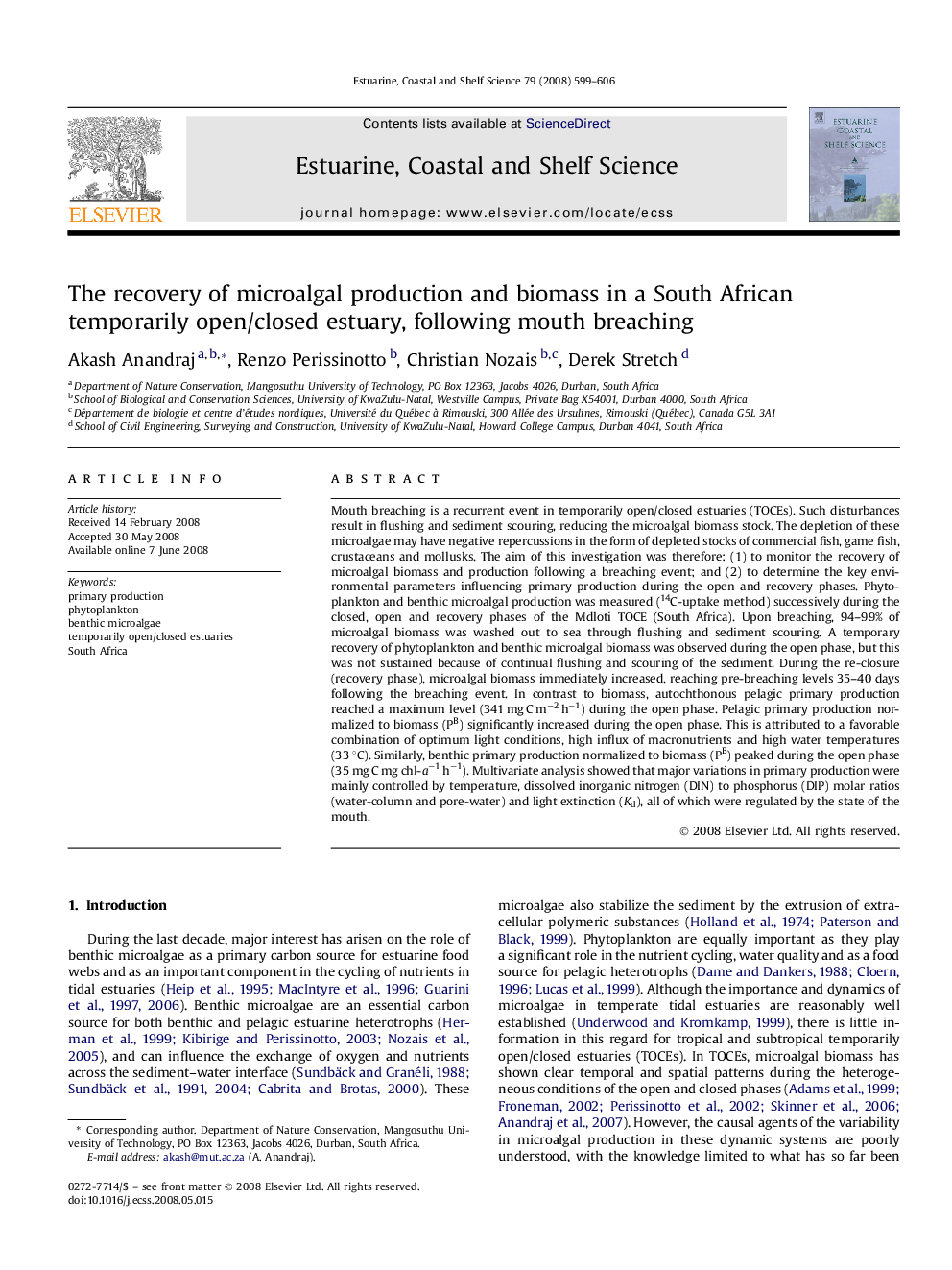| Article ID | Journal | Published Year | Pages | File Type |
|---|---|---|---|---|
| 4541585 | Estuarine, Coastal and Shelf Science | 2008 | 8 Pages |
Mouth breaching is a recurrent event in temporarily open/closed estuaries (TOCEs). Such disturbances result in flushing and sediment scouring, reducing the microalgal biomass stock. The depletion of these microalgae may have negative repercussions in the form of depleted stocks of commercial fish, game fish, crustaceans and mollusks. The aim of this investigation was therefore: (1) to monitor the recovery of microalgal biomass and production following a breaching event; and (2) to determine the key environmental parameters influencing primary production during the open and recovery phases. Phytoplankton and benthic microalgal production was measured (14C-uptake method) successively during the closed, open and recovery phases of the Mdloti TOCE (South Africa). Upon breaching, 94–99% of microalgal biomass was washed out to sea through flushing and sediment scouring. A temporary recovery of phytoplankton and benthic microalgal biomass was observed during the open phase, but this was not sustained because of continual flushing and scouring of the sediment. During the re-closure (recovery phase), microalgal biomass immediately increased, reaching pre-breaching levels 35–40 days following the breaching event. In contrast to biomass, autochthonous pelagic primary production reached a maximum level (341 mg C m−2 h−1) during the open phase. Pelagic primary production normalized to biomass (PB) significantly increased during the open phase. This is attributed to a favorable combination of optimum light conditions, high influx of macronutrients and high water temperatures (33 °C). Similarly, benthic primary production normalized to biomass (PB) peaked during the open phase (35 mg C mg chl-a−1 h−1). Multivariate analysis showed that major variations in primary production were mainly controlled by temperature, dissolved inorganic nitrogen (DIN) to phosphorus (DIP) molar ratios (water-column and pore-water) and light extinction (Kd), all of which were regulated by the state of the mouth.
